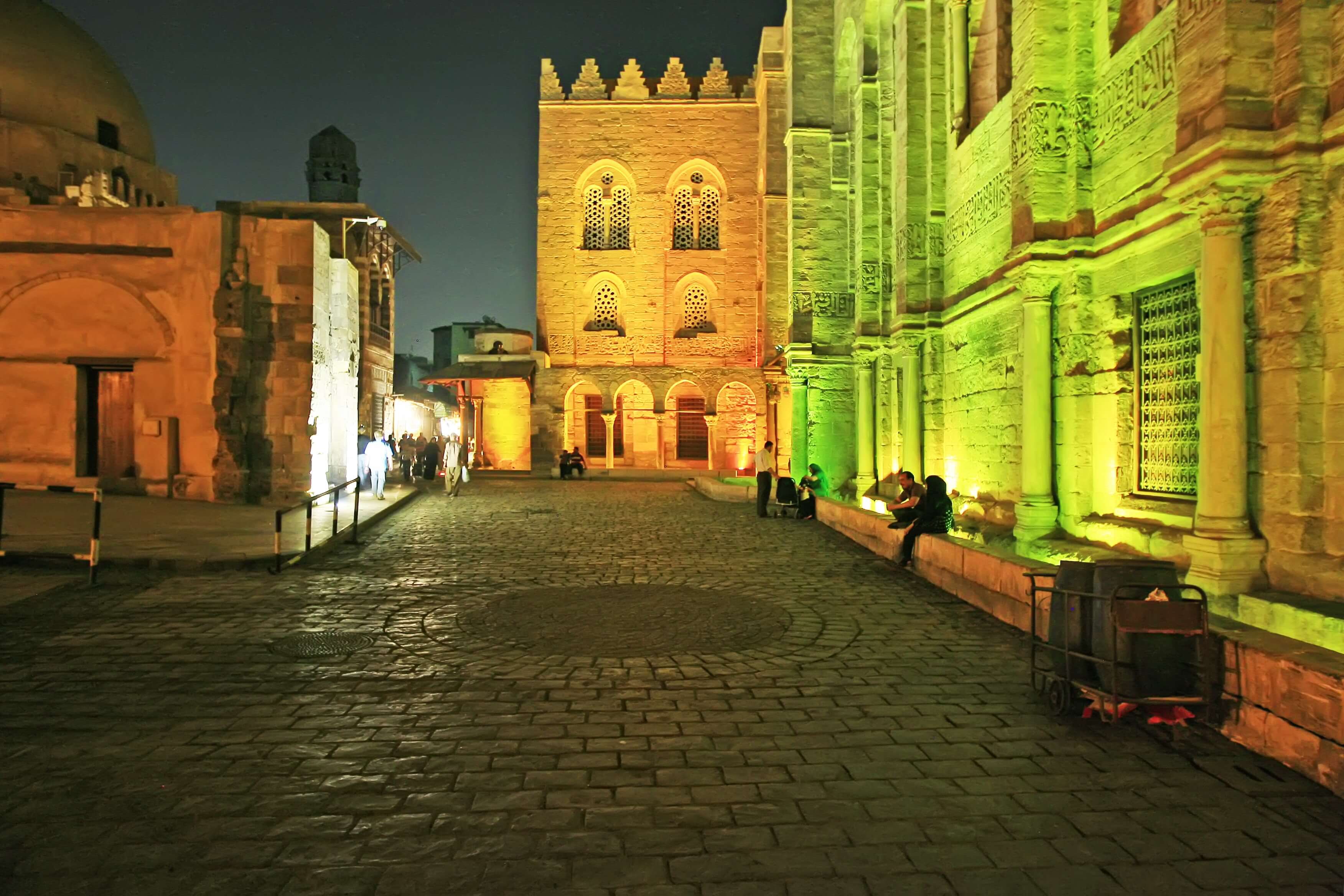Al-Muizz Street
Is one of the oldest streets in Cairo, approximately one kilometer long (1000 meter)
Al-Muizz Street, situated at the heart of its equally famous Al-Husayn district—also known as Fatimid, or Islamic, Cairo.
Islamic Cairo is indeed an open-air museum—one dating back more than 1,000 years when Gen. Jawhar Al-Siqilli led the troops of the Fatimid caliph Al-Muizz li-Din Ilah (the Fortifier of the Religion of God) to conquer Egypt in 969 CE, founding the city of Cairo shortly after.
A UNESCO World Heritage Site, Islamic Cairo is believed to house the greatest concentration of medieval Islamic monuments in the world. With the Al-Husayn Mosque, after which the district is named—and where it is said the head of the legendary grandson of the Prophet Muhammad, Husayn Ibn Ali, resides—the Al-Azhar Mosque and University, one of the world’s oldest higher learning institutions and the leading Sunni Muslim authority in the world, and the famous Khan El-Khalili medieval market, tourists are truly spoilt for choice here.
But Al-Muizz Street—it’s full name, “Al-Muizz li-Din Ilah Al-Fatimi Street”—has an even higher concentration of such monuments than anywhere else in the area. The street, which runs north–south through the heart of the Al-Husayn district from the old northern wall and its famous twin gates all the way down to the tent market, contains more than 30 medieval monuments including mosques, madrasas and water fountains, mostly from Egypt’s Mamluk era during the 13th–16th centuries CE, as well as from the preceding Ayyubid (Saladin’s descendants) and Fatimid periods.
Some of the street’s own marvels from the past include must-sees for any aficionados of Islamic architecture: the dazzling 12th-century Al-Aqmar (“moonlit”) Mosque; the 13-century mosque–mausoleum–hospital complex of Sultan Qalawun, built over an old Fatimid palace and once housing a specialized ward for mentally ill patients; and the Mosque of the Fatimid Caliph Al-Hakim—Al-Muizz’s grandson—which boasts a spectacular open courtyard and the two oldest minarets in Cairo’s much-touted 1,000-plus collection.





